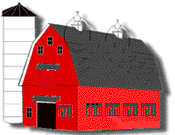 The home page. The landing page. The default page.
The home page. The landing page. The default page. By Gail J Berg ©2009
 The home page. The landing page. The default page.
The home page. The landing page. The default page.
This is usually a page that is named something like “index.html” or “default.htm”. Check with your Web Service Provider (WSP) as to what the default name of the home page or list of possible names can be used when you simply use the domain name as the full path (e.g., http://modelhorse.gallery/ expands to http://modelhorse.gallery/index.html).
This is usually the first page that your customers will see when they visit your site. This also may be the single page that you link “back” to from the various sub pages, in a hierarchical sense.
What basic information might be presented?
How about the name of the site, and a brief summary sentence (or purpose) of what the web site presents.
Often the name of the site, or a definition of the page, occurs in the title of the page; the title is what appears at the center top of the window when browsing. This is important to remember to fill in not only to help the (human) user browsing through the site, but it’s also an important thing that ‘bots look for when parsing pages. It’s often the title that is the main tagline when displaying search results. And often the headline of the page (often a <h1> tag) may also use the same text. This page shows the title of “Model Horse Gallery Library” and also is used as the headline of the page.
Then below the name and summary, provide the links for navigation into the other parts of the site.
An interesting variation, from strictly an informational presentation of a main page, is my hockey information site. The default main page is the calendar, with frames set up with navigation on the side. Had I put in a more traditional default main page, I might have just an introduction rather than jumping right into the information to be presented.
A quick note on frames: the title shown is sometimes what the “frame” page defines as the title, not the individual pages.
Some things that I highly recommend to have a separate pages linked from the main page are privacy policy and contact information. Having this information on separate pages allows easy linking from any location on the site.
A privacy page, allows you to define what information is collected and how it is used. This is vital to have in a site that folks will be conducting business (buying, we all hope) with you. It provides them with a comfort level to know how information is used. It also should define any third party sites that may be utilized in a business transaction (and you should refer folks to those sites to read the respective privacy policies on those sites); third party sites may include PayPal (or other payment method) and shopping cart sites. You may have to communicate with your WSP to understand what information they collect and how you might have access to that information. I recommend all activities be straightforward and ethical in only utilizing the information as defined; for instance, if you state that you only contact folks to complete a sale, do not add them to a mailing list and send out information on a daily basis.
And a contact page, allows you to define how someone may contact you. Sometimes it may be hard to find an email address if you have an embedded email link in a long page, so pulling it out makes it easier to find and utilize. Making a phone number available to coordinate commerce is always helpful (but you may not want to give out your land line phone number if folks ship to a physical address). One note on using email addresses in your site, those ‘bots that do so much good in helping promote your site, some times also collect email addresses for use for SPAM/unsolicited commercial email. If you look at the source of the referenced contact page, you will note that the email address is “broken up” by using a short script; ‘bots cannot figure out how to put that information together, but any user simply sees a good email address to use.
You might also have a page that discusses your business policies, such as this. The example provides information on shipping, including holiday deadlines, as well as returns and returned check fees. One of the most important things about having such as page is that it gives you an opportunity to spell out some things that allow for better interaction between the customer and yourself to hopefully avoid misunderstandings.
And by all means, include any links and graphics to business groups you are a member (in good standing) of, including the Better Business Bureau, your local Chamber of Commerce, breed organizations, RESS, to enhance the confidence of folks doing business with you.
![]() Back up to Library
Back up to Library
![]() Return to the Model Horse Gallery Home Page
Return to the Model Horse Gallery Home Page
This page maintained by the Model Horse Gallery Curator ©1996-2020